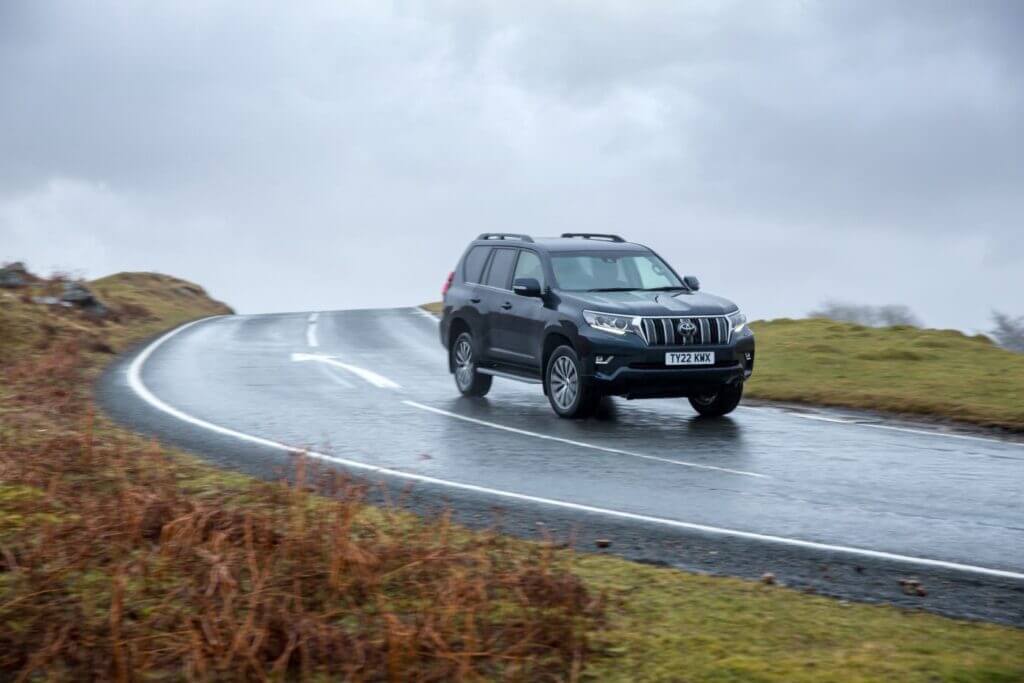What to do if you aquaplane
If your vehicle starts to aquaplaning, maintaining composure and regaining control of your vehicle should be your immediate priority. Here are our top tips to control an aquaplaning vehicle:
1. Don’t hit the brakes.
When you start aquaplaning, it’s crucial not to apply the brakes abruptly. Hitting the brakes can make the situation worse as it can cause your wheels to lock up, making it even harder to regain control. Instead, refrain from using the brakes until your car regains control.
2. Slowly ease off the accelerator
Gently ease off the accelerator as this reduces the speed of the vehicle and can help you to regain control. Avoid sudden or jerky movements, as they can worsen the situation.
3. Keep the steering wheel straight
Maintain a straight path by keeping your steering wheel as straight and steady as possible to allow your tyres to regain grip. Don’t attempt to make any abrupt steering corrections as they can cause your vehicle to skid or spin.
4. Turn off cruise control (if applicable)
If your vehicle is utilising cruise control, turn it off. Cruise control is used to maintain a constant speed, which is not suitable when aquaplaning as you need to have full control over your vehicle’s speed during this situation.
5. Slowly begin to brake when you regain control
When your tyres have regained traction with the road, you can gently apply the brakes to either slow down or come to a complete stop. Make sure your braking is gradual and controlled to prevent further loss of traction.
How to avoid aquaplaning
There are a number of things you can do to avoid aquaplaning, key actions include:
Plan ahead
Before embarking on your journey, check the weather forecast and assess road conditions. Plan your route accordingly, and if possible, try to avoid driving in heavy rain or during severe weather events. By planning ahead, you can make informed decisions.
Understand the conditions of the road
Road conditions can change in wet weather and factors such as oil spills or accumulated mud can make the situation worse. Make sure you drive to the conditions of the road and be extra cautious when driving in hazardous conditions.
Watch your speed
You should always drive at a speed appropriate for the road and weather conditions. Driving at a lower speed improves the traction between your tyres and the road surface.
Drive smoothly
In wet and rainy conditions, avoid making any harsh or sudden actions such as accelerating too quickly or hard braking. Smooth actions allow your tyres to maintain better contact with the road surface, reducing the risk of losing traction and aquaplaning.
Follow the track
If there is a vehicle in front of you, try to drive in the tyre tracks left by them. These tracks tend to have less water accumulation and better traction. However, maintain a safe distance behind them to ensure that you are able to react to sudden braking or changes in direction.
Keep your tyres in good condition
Poor tyre condition can contribute to aquaplaning, for this reason, it’s essential to regularly check your tyres to ensure that they are in good condition and inflated properly.
The legal minimum tyre tread is 1.6mm, however, for optimal safety in wet conditions, it’s advisable to replace your tyres before they reach this legal limit. Many experts recommend having a minimum tread depth of at least 3mm to maintain good wet-weather performance.
Maintain appropriate stopping distances
Double your usual stopping distance when driving in rainy and wet conditions to account for the loss of your car’s tyre traction.
Don’t use cruise control
In wet and rainy conditions, cruise control may cause you to drive too closely to other vehicles, reducing the likelihood of being able to effectively react to situations. You want to have immediate control over your vehicle in poor weather and road conditions.



